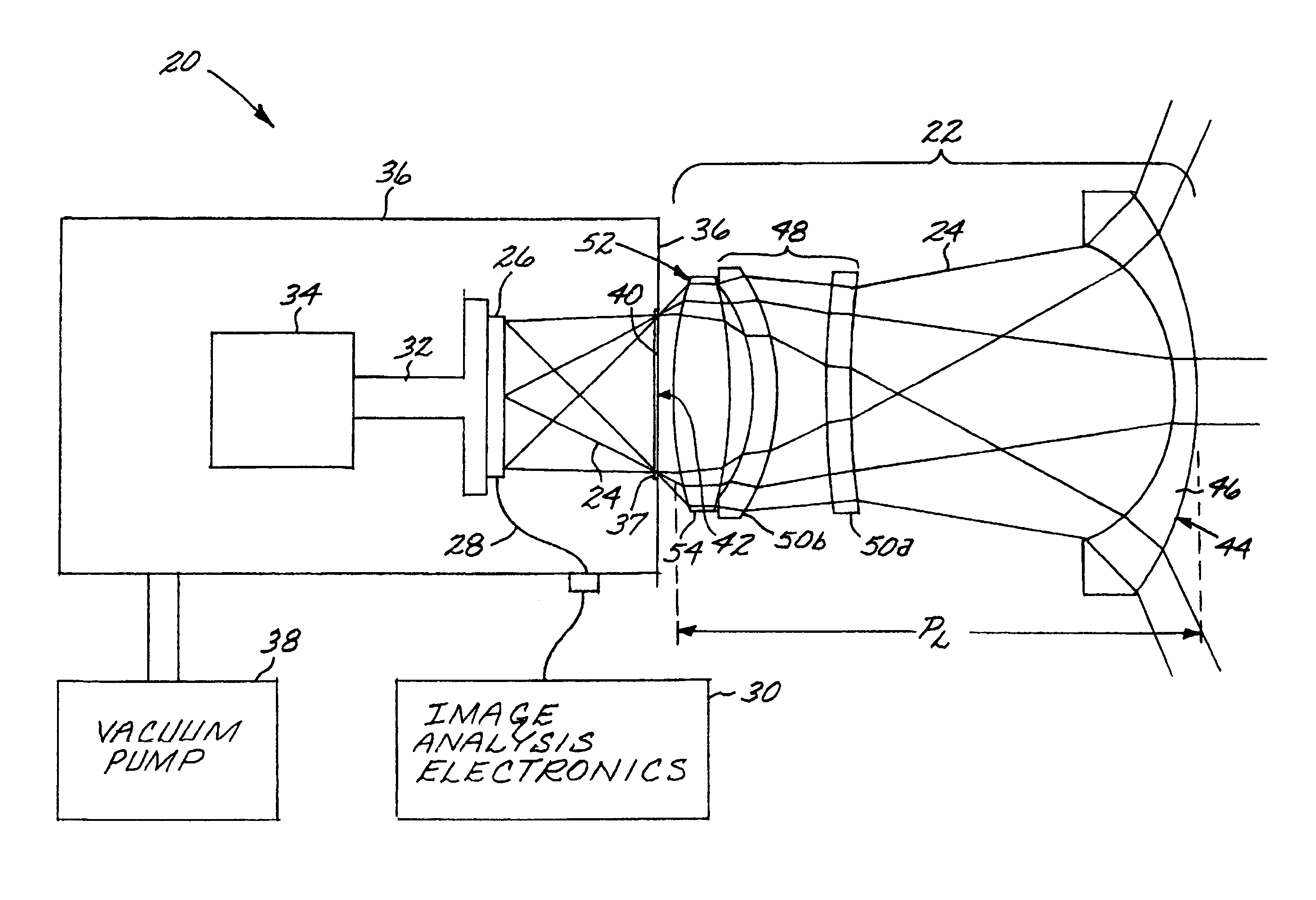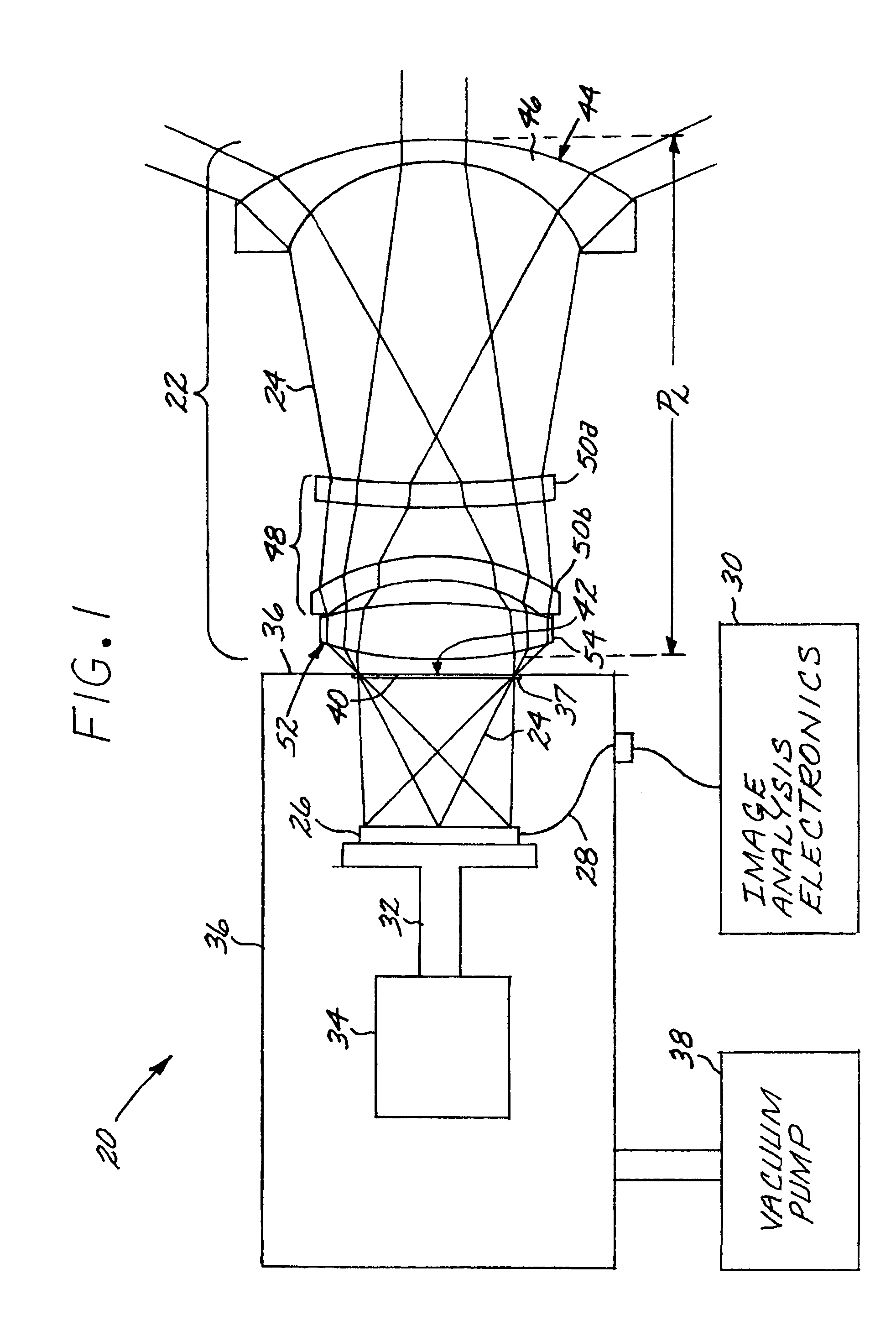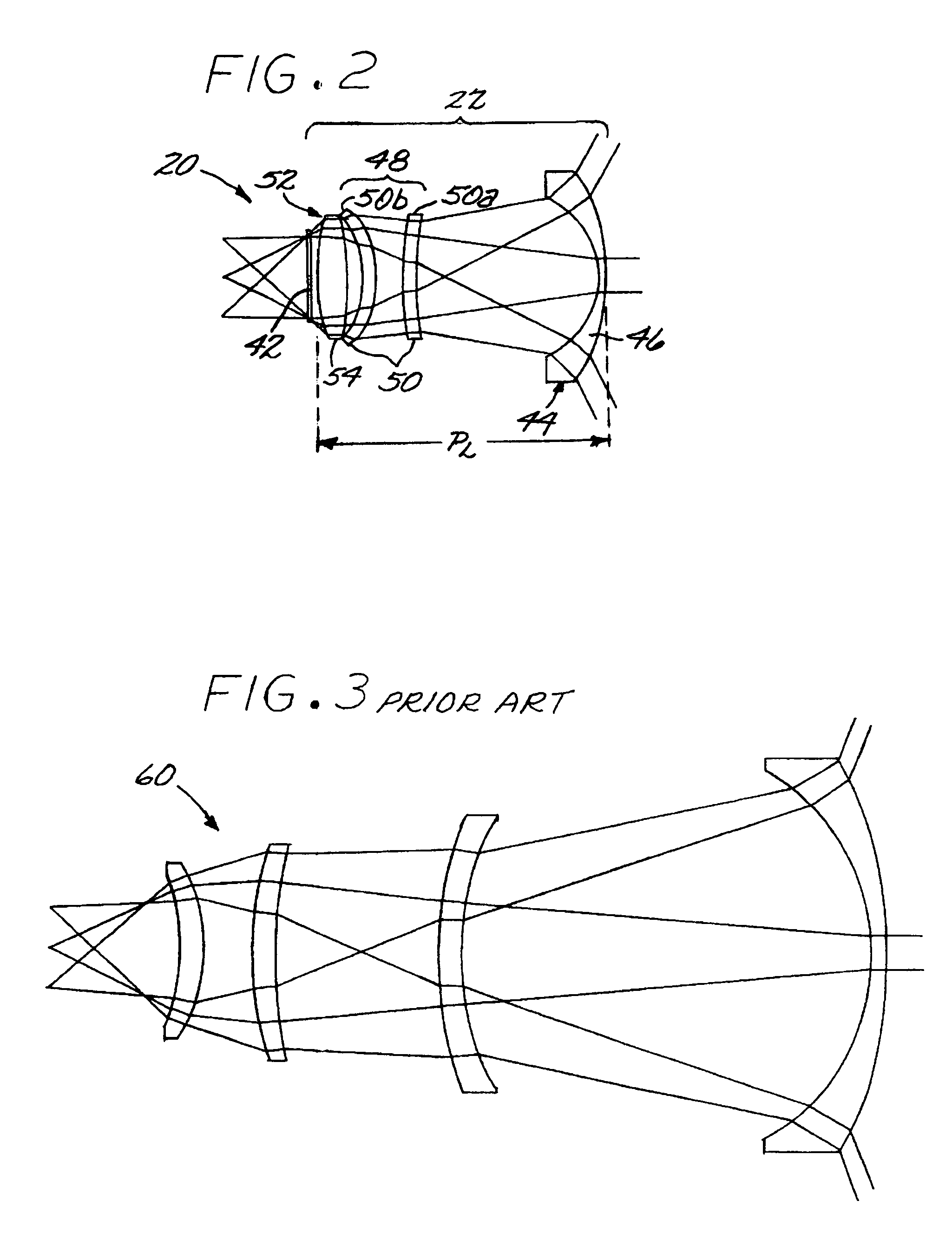Compact inverse-telephoto infrared imaging optical system
a technology of infrared imaging and optical system, which is applied in the direction of optical elements, instruments, optical radiation measurement, etc., can solve the problems of large infrared sensor weight and size, large-diameter lens cost and large-diameter lens, etc., and achieves low weight and small size.
- Summary
- Abstract
- Description
- Claims
- Application Information
AI Technical Summary
Benefits of technology
Problems solved by technology
Method used
Image
Examples
Embodiment Construction
[0020]FIG. 1 depicts an infrared imaging optical system 20. The infrared imaging optical system 20 includes a lens group 22 that focuses an infrared light beam 24 from a scene onto an infrared detector 26. The infrared detector 26 is preferably a focal plane array (FPA) located at the focal plane of the lens group 22. The infrared detector 26 may be selected to be sensitive to any infrared wavelength or range of wavelengths. Preferably, it is sensitive to infrared wavelengths of from about 2 to about 7 micrometers wavelength, and more preferably the mid wavelength infrared range of from about 3 to about 5 micrometers wavelength. Infrared detectors 26 of these types and their manufacture are known in the art. The infrared detector 26 converts the incident infrared light beam 24 to an output signal 28, which is analyzed by image analysis electronics 30. Such image analysis electronics 30 is known in the art.
[0021]The preferred infrared detector 24 operates most effectively and efficie...
PUM
 Login to View More
Login to View More Abstract
Description
Claims
Application Information
 Login to View More
Login to View More - R&D
- Intellectual Property
- Life Sciences
- Materials
- Tech Scout
- Unparalleled Data Quality
- Higher Quality Content
- 60% Fewer Hallucinations
Browse by: Latest US Patents, China's latest patents, Technical Efficacy Thesaurus, Application Domain, Technology Topic, Popular Technical Reports.
© 2025 PatSnap. All rights reserved.Legal|Privacy policy|Modern Slavery Act Transparency Statement|Sitemap|About US| Contact US: help@patsnap.com



